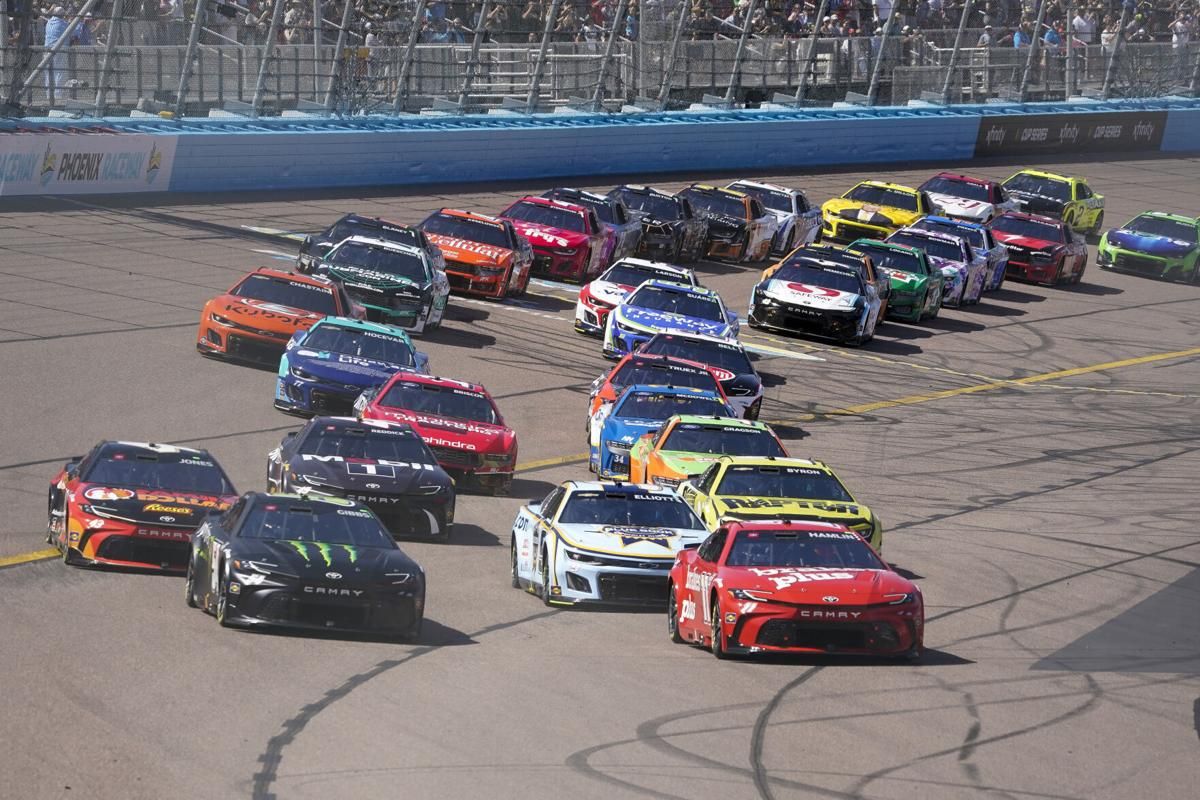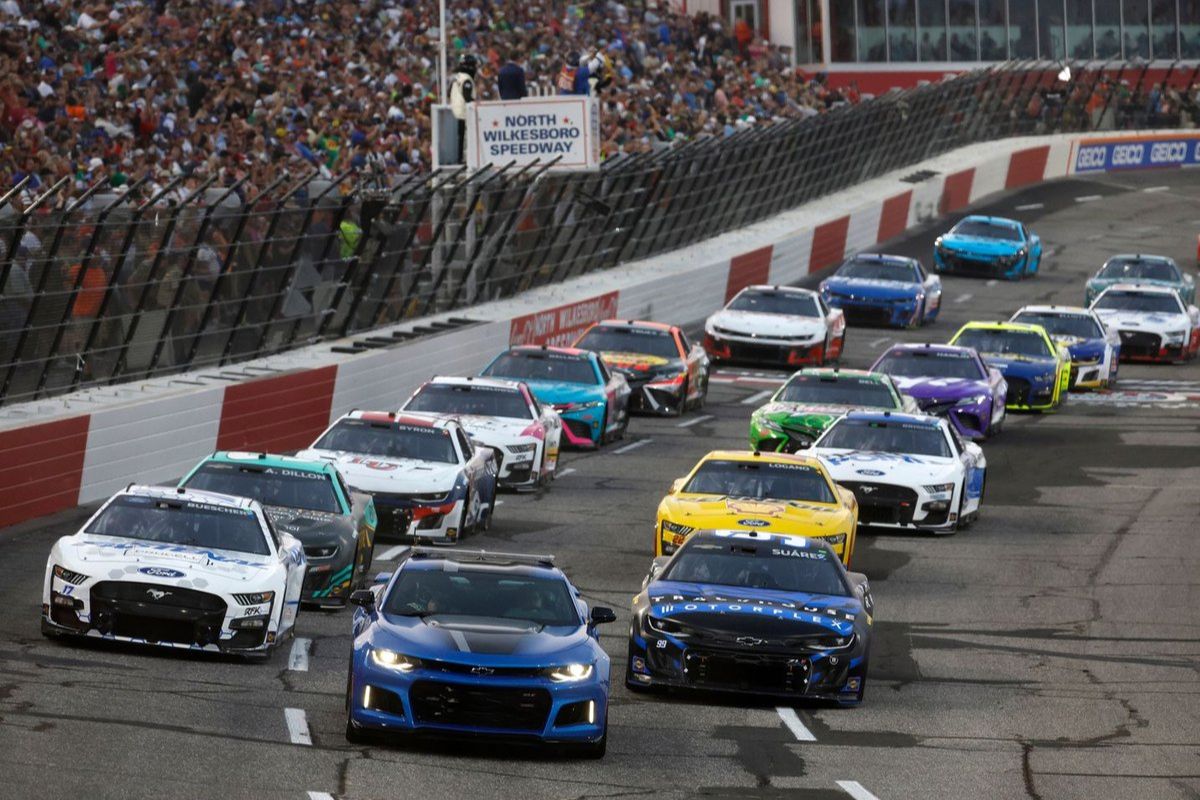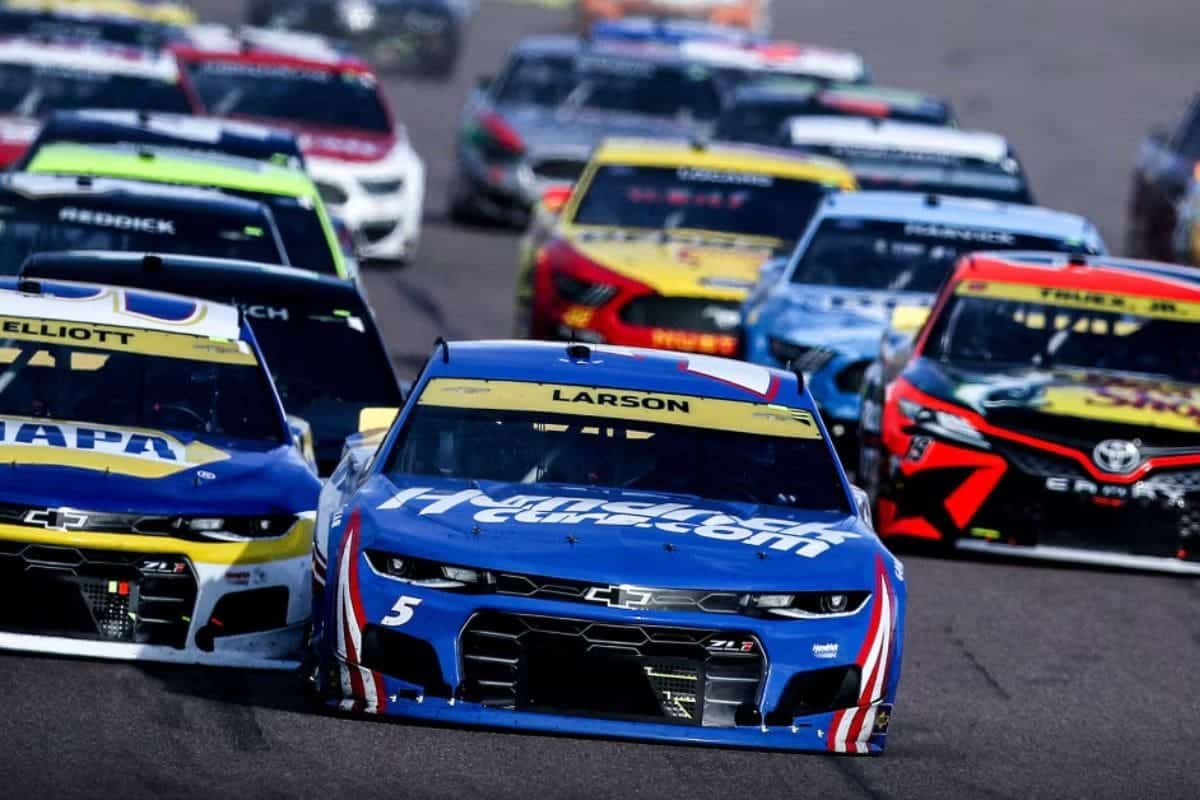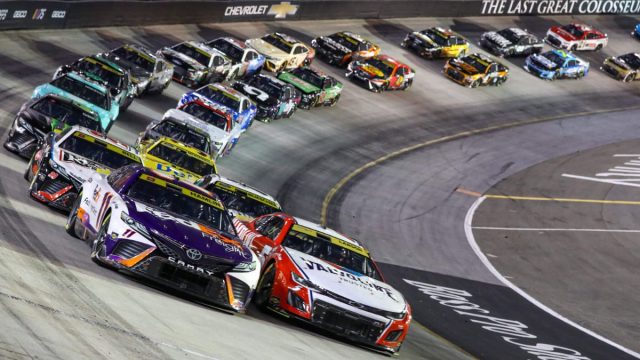NASCAR Drivers’ Car Control Tactics: In NASCAR, the introduction of the Next Gen Car has presented a new set of challenges and opportunities in vehicle dynamics and control. Drivers and their respective teams are continually adapting to the subtle changes in car design, particularly focusing on adjustments in suspension, tire inflation, and alignment to optimize performance on diverse tracks. This meticulous fine-tuning process is essential as it directly impacts handling characteristics, such as understeer and oversteer, which are essential for maintaining high speeds while negotiating tight corners.
Key Takeaways
- Drivers provide real-time feedback to adjust tire pressure and alignment for optimal handling.
- Suspension settings are fine-tuned to suit individual driver preferences and track conditions.
- Use of a wedge wrench allows precise adjustments between understeer and oversteer for better car balance.
- Continuous analysis of data informs strategic pit stop decisions to maintain car performance.
- Handling balance is crucial, with adjustments made to springs and throttle control based on track dynamics.
Next Gen Car and the Importance of Handling
The Next Gen car, introduced by NASCAR, represents a significant evolution in racing technology, emphasizing the critical role of handling for peak performance. This car, a fusion of cutting-edge technology and precise mechanics, has redefined the standards of stock car racing. Its intricate design and advanced features demand not only superior driving skills but also a deep understanding of its technical subtleties to maintain peak handling.
Handling, in the context of the Next Gen car, refers to how well the vehicle responds to driver inputs and track conditions. The car’s performance is heavily dependent on its ability to maintain stability and control, especially at the high speeds and sharp turns typical of NASCAR races. The chassis and suspension systems are engineered for adjustability, allowing teams to fine-tune settings based on real-time race data and track specifics. This level of customization is important for adapting to the diverse array of tracks in the NASCAR circuit, each presenting unique challenges in terms of surface texture, banking angles, and weather conditions.
Moreover, the aerodynamic profile of the Next Gen car plays a significant role in its handling characteristics. The body features enhanced aerodynamics that help in reducing drag and increasing downforce, important for maintaining high-speed stability. This aerodynamic efficiency allows drivers to execute sharper maneuvers and maintain closer proximity to competitors without significant loss of control.

Driver-Crew Chief Collaboration
Effective collaboration between NASCAR drivers and their crew chiefs is essential in achieving the ideal handling balance necessary for competitive racing. This partnership is the backbone of performance optimization in races, where every moment counts. Joe Gibbs Racing illustrated through a social media video how vital this relationship is.
The process begins with the driver’s ability to communicate effectively the car’s behavior on the track, be it a tight (understeering) or loose (oversteering) condition. This feedback becomes the key input for the crew chief’s decision-making process.
The crew chief, armed with this information, utilizes a combination of real-time data, simulations, and historical performance analytics to formulate strategies that address these issues.
- Driver Feedback: Immediate and precise feedback from the driver on the car’s handling characteristics.
- Tire Management: Adjustments in tire air pressure and alignment based on the driver’s reports and telemetry data.
- Suspension Adjustments: Use of tools like a wedge wrench to fine-tune suspension settings to the driver’s preferences.
- Data Utilization: Analysis of detailed data sets including tire wear and fuel consumption to strategize pit stops and adjustments.
- Strategic Calls: Decisions on when to pit and what adjustments to make during pit stops to optimize car performance throughout the race.


Understanding Understeering and Oversteering
Understeering and oversteering are critical handling characteristics in NASCAR, influenced markedly by the car’s suspension settings and tire dynamics. Understanding these phenomena is crucial for optimizing vehicle performance on the track.
Understeering occurs when the front wheels do not turn enough in relation to the steering input, causing the car to continue straight instead of following the intended curve. This can often result from an imbalance in suspension settings where the front tires are overloaded and cannot provide sufficient grip to execute the turn.
Oversteering, on the other hand, is characterized by the rear tires losing traction before the front tires, causing the rear of the car to swing outwards. This is often more pronounced under conditions where the rear suspension setup promotes a quicker release of energy stored in the springs, leading to a reduction in tire adherence to the track surface.
The NASCAR vehicles’ specialized suspension systems, composed of finely tuned springs and dampers, play a crucial role in these dynamics. The springs absorb energy from the tires while the dampers distribute it throughout the vehicle. Adjusting these components using a wedge wrench can greatly alter the car’s handling, shifting the balance between understeer and oversteer. Precision in these adjustments ensures that the tires maintain optimal contact with the track, allowing for rapid but controlled recovery of traction.
Importance of Handling Balance
Achieving a perfect handling balance is vital for NASCAR teams, as it directly influences both the safety and performance of the vehicle throughout the race. The complexity of maintaining this balance is highlighted by the unique characteristics and evolving conditions of each track. A well-balanced car provides the driver with the necessary stability and agility to navigate through tight corners and high-speed stretches effectively, without compromising on race strategy.
- Track Variation: Each NASCAR track has distinct features that demand specific handling setups. Adapting to these variations is key to achieving peak performance.
- Dynamic Track Conditions: As races progress, track conditions change due to wear and the accumulation of rubber, affecting the car’s handling. Teams must continuously adjust their strategies to maintain balance.
- Spring Adjustments: To counteract these changes, pit crews often adjust the vehicle’s springs during the race, aiming to preserve the handling characteristics initially set.
- Handling Effects: Proper handling balance prevents the car from becoming too tight (understeering) or too loose (oversteering) in turns, which can lead to loss of time or control.
- Throttle Management: Effective throttle control is crucial. Over-reliance on deceleration to manage handling can drastically reduce competitiveness, likening it to a retreat.

News in Brief: NASCAR Drivers’ Car Control Tactics
NASCAR drivers’ expertise in navigating the Next Gen Car highlights the crucial role of vehicle handling in motorsports. Through strategic collaboration with crew chiefs and careful adjustments to suspension, tire inflation, and alignment, drivers optimize the car’s performance.
Mastery over understeering and oversteering, achieved through a deep understanding of handling dynamics, guarantees maximum tire efficacy and vehicle stability, which are essential for gaining a competitive edge during races.
ALSO READ: NASCAR Next Gen Car Inspection: Unveiling the Precision Behind Pre-Race Scrutiny
